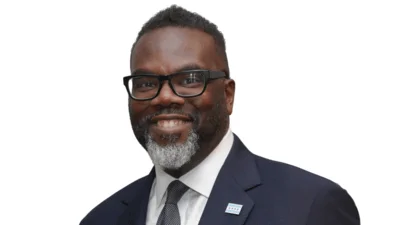Ald. Roberto Maldonado | Facebook
Ald. Roberto Maldonado | Facebook
Valerie Jones is desperate for a new community in the place she calls home.
“The CPS schools in our communities were closed and need to be repurposed based on the needs of the community. Violence in our black communities are due to disinvestment. There are no thriving businesses or affordable housing,” Jones told the Chicago Advisory Redistricting Committee during public comments. “A block-by-block difference in communities shows the impact that poverty has in my neighborhoods and places we call home.”
Residents like Jones are aiming to have more of a voice in the drafting of new boundaries now under way in the Chicago City Council. Ditto for organizations such as the Black and Latino Caucus.
“Definitely discussions have started,” said 26th Ward Ald. Robert Maldonado. “I’m going to be looking out first and foremost for the interest of the Latino community at large in the city of Chicago so that we can really and truly get a fair map, not like we did 10 years ago. We were shortchanged by the previous mayor at the time, Mayor (Rahm) Emanuel. We will not allow that to happen again.”
Maldonado said it would help to have updated census data, but that isn’t expected to be available until mid-August. He predicted the actual drawing of a new map will begin in September, adding he’s committed to holding public hearings and hearing from constituents as part of the process.
Galvanized by the nonpartisan group CHANGE Illinois, the Chicago Advisory Redistricting Commission is completely separate from the City Council and began holding public hearings of their own back in June. The group now counts 13 commissioners, with CHANGE Illinois’ Chicago Project Manager Chaundra Van Dyk insisting the members were selected to represent the city’s age, geographic and racial diversity.
Van Dyk said their primary goal will be drawing a map that’s “by the people and for the people,” based on census data combined with community input.
“It’s typically done in a back room, closed process where residents don’t really have a voice in the process in how their communities are drawn,” she said. “The decisions are made and then they’re made public and people just have to live with the decisions that have been made in their communities. We believe this should be an independent process where residents have some power, some voice.”
She said the goal is to have a draft map completed over the next several months that will be ready to interact with the public and receive feedback from the community.





 Alerts Sign-up
Alerts Sign-up